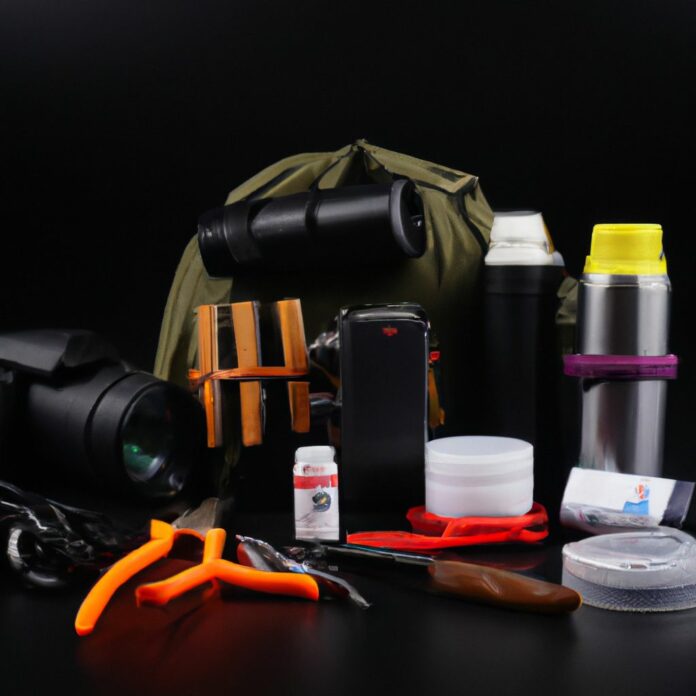A tactical survival kit is a crucial tool for individuals who venture into challenging and unpredictable environments. The contents of a well-equipped tactical survival kit can make a significant difference in survival situations. According to expert survival guide author John Wiseman, a tactical survival kit should contain essential items that cover the fundamental needs for survival.
These items can be categorized into shelter and warmth, water and food, first aid and medications, tools and equipment, navigation and communication, and personal protection. Tailoring the kit to suit specific location and environmental factors is essential. Regular inspection and maintenance of the kit are also necessary to ensure its reliability.
It is equally important to understand what should not be included in a tactical survival kit, such as unnecessary or excessive items, fragile or bulky items, and non-essential luxury items. By being prepared with a well-thought-out tactical survival kit, individuals can increase their chances of survival and navigate unexpected situations with confidence.
Essential Items for a Tactical Survival Kit
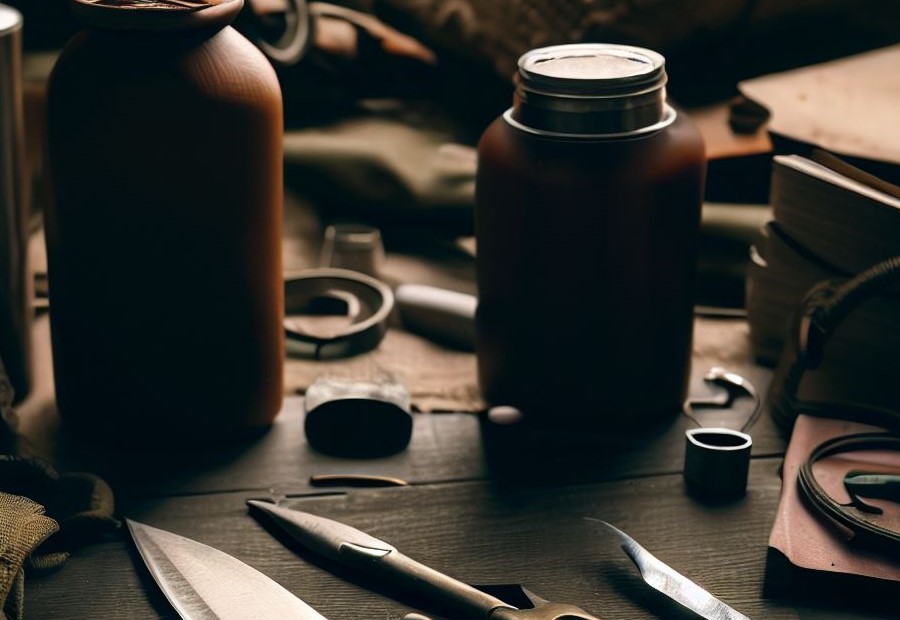
Are you ready to equip yourself with the necessary tools to survive in the wild? In this section, we will explore the essential items that should be in every tactical survival kit. From shelter and warmth to water and food, first aid and medications to tools and equipment, navigation and communication to personal protection – we’ve got you covered. Get ready to discover the key components that will enhance your chances of survival in challenging outdoor situations.
Shelter and Warmth
During a tactical survival situation, ensuring shelter and warmth is essential for your well-being and survival. You need to have proper protection from the elements to maintain your body temperature and stay comfortable.
Here are some crucial items to consider for shelter and warmth in a tactical survival kit:
1. Tent or Tarp: A lightweight and durable tent or tarp can provide you with a sheltered space to protect you from rain, wind, and other weather conditions.
2. Sleeping Bag: A high-quality sleeping bag designed for outdoor use can keep you warm and insulated, even in cold temperatures.
3. Emergency Blanket: An emergency blanket is lightweight and compact, yet it provides effective insulation by reflecting your body heat back to you.
4. Fire Starter: Having a reliable fire starter, such as waterproof matches or a ferro rod, is crucial for creating heat and warmth. You can use it to start a fire for cooking, boiling water, and staying warm.
5. Extra Clothing: Pack extra layers of clothing, including thermal base layers, insulating jackets, and waterproof outer shells, to protect yourself from extreme temperatures and maintain warmth.
Remember, the specific items you include in your tactical survival kit may vary based on your location, climate, and personal preferences. It’s important to customize your kit to suit your specific needs.
Fact: Did you know that hypothermia, a dangerous condition caused by prolonged exposure to cold temperatures, can set in as quickly as 10 minutes in extreme conditions? Being prepared with shelter and warmth measures can significantly reduce the risk of hypothermia and ensure your safety in a survival situation.
Water and Food
Water and food are two essential items that should always be included in a tactical survival kit. When preparing for an emergency, it is vital to ensure that you have a sufficient supply of clean water and nutritious food to sustain you.
Water is crucial for hydration and maintaining overall health. It is recommended to have at least one gallon of water per person per day for drinking and sanitation purposes. In order to make any available water safe to drink, you can also include water purification tablets or a portable water filter in your kit.
When it comes to food, it is important to select non-perishable items that are easy to store and prepare. Canned foods, energy bars, dried fruits, and nuts are excellent options as they provide necessary nutrients and have a long shelf life. It is advisable to choose foods that are high in calories and protein to provide energy and support physical endurance.
If you have any special dietary needs or restrictions, it is crucial to consider those when selecting food items for your survival kit. Make sure to pack foods that meet those specific needs in order to ensure your health and well-being.
Remember to periodically check and replace the water and food supplies in your survival kit to ensure that they remain fresh and within expiration dates. In emergency situations, having access to clean water and nourishing food can make a significant difference in your chances of survival.
First Aid and Medications
When assembling a tactical survival kit, it’s crucial to include essential first aid supplies and medications to ensure you can address any injuries or health concerns that may arise in emergency situations. Here is a list of important items to include:
- First Aid: Pack a variety of bandages in different sizes to treat cuts, scrapes, and blisters.
- First Aid: These items are essential for covering and securing larger wounds.
- First Aid: Use these to clean wounds and prevent infection.
- Medications: Apply this to wounds to promote healing and prevent infection.
- Medications: Include over-the-counter pain relievers such as acetaminophen or ibuprofen to manage pain and inflammation.
- Medications: Have antihistamines on hand to treat allergic reactions.
- Medications: If you have any essential prescription medications, be sure to include an adequate supply in your kit.
- First Aid: These tools are useful for removing splinters or cutting bandages and tape.
- First Aid: Use disposable gloves to protect yourself and others while administering first aid.
- First Aid: It’s important to have a CPR mask in case you need to perform cardiopulmonary resuscitation.
Remember to regularly check the expiration dates on medications and replace them as needed. Customize your first aid supplies based on any specific medical conditions or allergies you or your group may have. Adding these items will help ensure you are prepared to address medical needs during emergencies.
Tools and Equipment
When preparing a tactical survival kit, it’s important to include the necessary tools and equipment to ensure your survival in any situation. Here are some essential tools and equipment to consider:
| 1. Multi-tool | A multi-tool is a versatile tool that combines various functions such as pliers, knives, screwdrivers, and more, making it invaluable in a survival situation. |
| 2. Firestarter | A reliable firestarter, such as a waterproof lighter or ferrocerium rod, is crucial for creating fire and providing warmth, light, and a means to cook food. |
| 3. Survival knife | A high-quality, sturdy survival knife is essential for various tasks, including cutting rope, building shelters, and preparing food. |
| 4. Flashlight | A durable, waterproof flashlight with long battery life is vital for navigating in the dark and signaling for help. |
| 5. Compass | A reliable compass helps determine direction and navigate through unfamiliar terrain, ensuring you can find your way back or reach a safe location. |
| 6. Rope or paracord | A strong and versatile rope or paracord can assist in setting up shelters, creating traps, securing gear, and performing various survival tasks. |
| 7. Water purification method | Having a water purification method, such as water purification tablets or a portable water filter, allows you to safely consume water from natural sources. |
Including these tools and equipment in your tactical survival kit will help ensure you have the necessary means to overcome challenges and increase your chances of survival.
Navigation and Communication
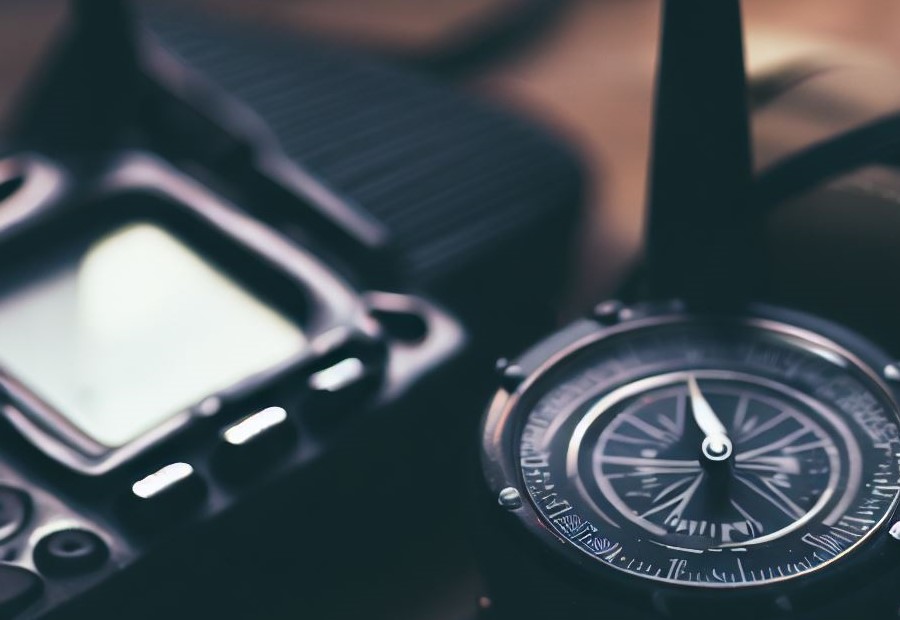
When it comes to navigation and communication in a tactical survival kit, there are several essential items to consider:
- Map and compass: These tools are crucial for navigating and finding your way in unfamiliar terrain. Ensure that you have a detailed map of the area you will be operating in and a reliable compass to accurately determine directions.
- GPS device: A GPS device can provide precise coordinates and help you navigate even in challenging conditions. Make sure to have spare batteries or a backup power source for your GPS device.
- Walkie-talkies or two-way radios: Communication is vital in a survival situation, especially when operating in a team or coordinating with rescue parties. Walkie-talkies or two-way radios allow for quick and efficient communication over short distances. Ensure that you have spare batteries or a way to recharge them.
- Signal mirror: A signal mirror can be used to reflect sunlight and catch the attention of search and rescue teams or passing aircraft. It is essential for long-distance communication in open areas.
- Whistle: A whistle is a simple yet effective tool for alerting others to your location. It can carry sound over long distances, especially in dense forests or rugged terrain.
When assembling your tactical survival kit, remember to include these navigation and communication items to increase your chances of survival and rescue in emergency situations.
Personal Protection
When considering personal protection in a tactical survival kit, it is essential to include various items that can help ensure safety and security in emergency situations. Some of the key items to include are:
1. Self-defense tools: These can include pepper spray, a baton, or a personal alarm to ward off potential threats.
2. Protective clothing: This includes durable clothing and sturdy footwear to protect against environmental hazards.
3. Emergency blanket: This lightweight and compact item can provide warmth and shelter in adverse weather conditions.
4. First aid kit: This should contain essential medical supplies such as bandages, antiseptic wipes, and pain relievers.
5. Flashlight: A reliable flashlight is crucial for visibility during nighttime or low-light situations.
6. Whistle: A whistle can be used to attract attention and signal for help.
7. Multi-tool: This versatile tool can be used for various purposes, such as cutting, opening cans, or repairing equipment.
8. Firearm (if legally permitted and trained): In some situations, a firearm may provide additional personal protection. However, it should only be included if legal and with proper training.
9. Personal alarm: This can be used to alert others in case of danger or to deter potential threats.
10. Dust masks: These masks can provide protection against airborne particles, such as dust or smoke.
11. Gloves: Sturdy gloves can protect hands and provide a better grip in various situations.
Including these personal protection items in a tactical survival kit ensures that individuals are equipped to handle potential risks and maintain their well-being in challenging circumstances.
Additional Considerations for a Tactical Survival Kit
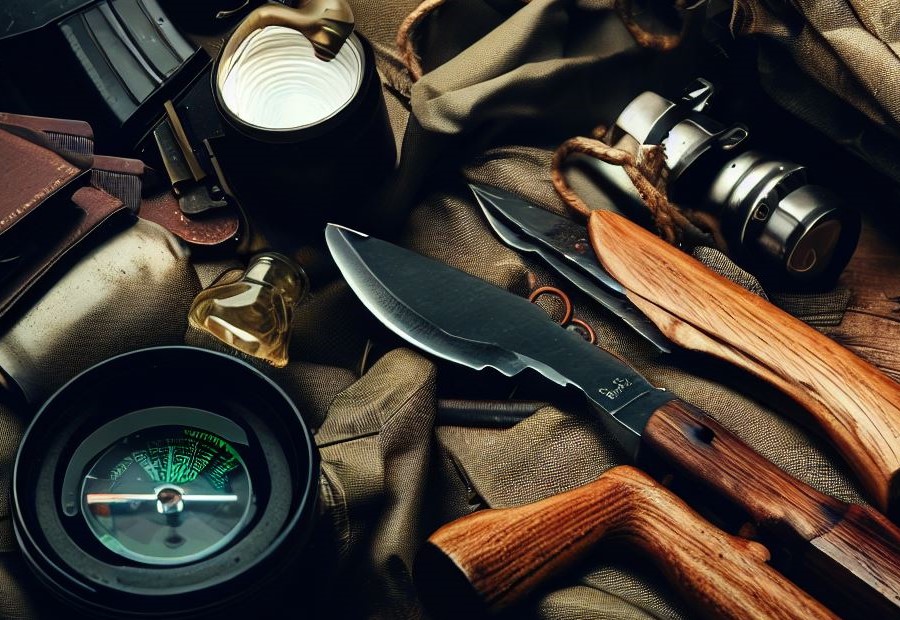
When building your tactical survival kit, don’t overlook the crucial additional considerations that can make all the difference in a crisis.
In this section, we’ll dive into the customization based on location and environment, ensuring your kit is tailored to the specific challenges you may face.
We’ll also explore considerations for special needs, ensuring that everyone in your group is well-prepared.
Lastly, we’ll touch on the importance of regular inspection and maintenance to keep your kit in optimal condition for any unexpected situations. So, let’s get prepared and ready for whatever comes our way!
Customization based on Location and Environment
The customization of a tactical survival kit based on location and environment is essential for ensuring preparedness in different situations and terrains. By considering the specific characteristics of the surroundings, one can optimize the kit’s effectiveness and increase their chances of survival.
| Customization based on Location and Environment | ||
| Mountainous Regions | Harsh and unpredictable weather conditions | Extra insulation and warm clothing to combat extreme cold temperatures. Sturdy ropes and climbing equipment for navigating steep slopes and cliffs. Lightweight and portable cooking gear suitable for high altitudes. |
| Desert Areas | Extreme heat and limited water sources | Sun protection such as hats, sunglasses, and sunscreen to shield from intense sunlight. Multipurpose tools for efficient water collection and filtration. Lightweight and breathable clothing to prevent overheating. |
| Forest and Jungle | Abundant vegetation and potential wildlife hazards | Machete or axe for clearing paths and building shelters. Waterproof gear to stay dry in humid environments. Animal repellents for protection against wildlife encounters. |
| Coastal Areas | Potential exposure to saltwater and limited freshwater sources | Waterproof containers to protect equipment from saltwater damage. Fishing equipment for acquiring food from the sea. Extra water purification methods to remove salt and other contaminants from available water sources. |
Customization based on location and environment is essential to address the specific challenges and requirements one may face in different survival scenarios. By adapting the contents of the tactical survival kit to suit these factors, individuals can enhance their chances of staying safe, well-prepared, and resilient.
Consideration for Special Needs
When creating a tactical survival kit, it is important to incorporate considerations for special needs. Every individual has unique requirements, and addressing these needs is essential to ensure their safety and well-being in emergency situations.
- Medical conditions: Ensure that necessary medications and supplies, such as EpiPens or insulin, are included if someone in your group has specific medical conditions like allergies, asthma, or diabetes.
- Mobility challenges: Individuals with mobility challenges may need specialized equipment like crutches, walkers, or wheelchairs. It is vital to include these items or find alternative options to ensure their mobility is not compromised.
- Dietary restrictions: If anyone in the group has dietary restrictions or food allergies, pack food options that cater to their needs. Including non-perishable and easily digestible items can be helpful.
- Communication: Special needs individuals may require alternative methods of communication. Include devices like communication boards, text-to-speech programs, or even pen and paper to facilitate effective communication.
- Sensory considerations: Respect the needs of individuals who may be sensitive to certain sensory stimuli. Include items like earplugs, sunglasses, or noise-canceling headphones to mitigate potential sensory overload.
Fact: According to a study published by the Centers for Disease Control and Prevention, 61 million adults in the United States are estimated to have a disability that impacts their daily lives.
Regular Inspection and Maintenance
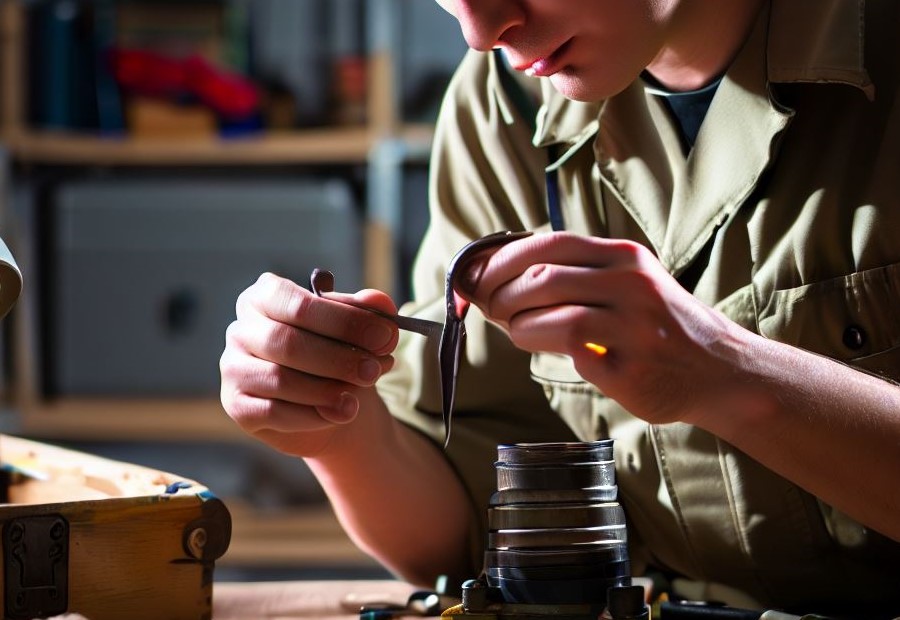
Regular inspection and maintenance is crucial to ensure the effectiveness and reliability of a tactical survival kit. Here are some steps to follow:
- Perform regular inspections and maintenance to check for any signs of damage or wear on all items in the kit. This includes inspecting the shelter, clothing, tools, and equipment for any tears, holes, or broken parts.
- Ensure that all batteries in electronic devices, such as flashlights or radios, undergo regular inspections and maintenance to ensure they are fully charged or replaced when necessary.
- Inspect the expiration dates of any food, water, medications, or first aid supplies in the kit during regular inspections. Replace any expired items to maintain their effectiveness.
- Clean and sanitize water containers and filters regularly during inspections to prevent contamination.
- Test any navigation or communication devices during regular inspections to ensure they are in working order. Replace any malfunctioning or outdated equipment.
- Continuously monitor the inventory of the kit and replenish any items that have been used or are running low. It’s essential to have an adequate supply of necessary items.
Regular inspection and maintenance help to guarantee that a tactical survival kit is in optimal condition, ready to address any unforeseen circumstances.
What Not to Include in a Tactical Survival Kit

When it comes to building a tactical survival kit, it’s crucial to know what NOT to include. In this section, we’ll uncover the items that are unnecessary, excessive, and add unnecessary weight to your kit. We’ll also explore the fragility of certain items and why they should be left behind. Lastly, we’ll discuss non-essential luxury items that might seem tempting but can actually hinder your survival efforts. Get ready to streamline your kit and maximize its effectiveness in any survival situation.
Unnecessary or Excessive Items
When packing a tactical survival kit, it is crucial to avoid including unnecessary or excessive items. These items not only add extra weight to your kit but can also take up valuable space. Here are some items to steer clear of:
- Avoid packing non-essential luxury items: While it may be tempting to include comfort and entertainment items, such as games or personal electronics, they are not vital for survival and can be left behind.
- Steer clear of duplicate items: Including multiple items that serve the same purpose, like multiple knives or flashlights, can be unnecessary. Choose the most reliable and versatile options.
- Avoid bulky or heavy items: It’s important to prioritize lightweight and compact items in a survival kit. Bulky items that take up too much space or add unnecessary weight should be omitted.
- Omit impractical tools: Tools that have limited usage or are not relevant to your specific survival needs should be left out. Stick to tools that have multiple functions and are essential for survival.
- Avoid unproven gadgets: While new and innovative gadgets may seem appealing, it’s wise to stick to tried and tested equipment. Avoid including unproven gadgets that may not work as intended.
Remember, the key to a tactical survival kit is to pack efficiently and only include essential items. Carrying unnecessary or excessive items can hinder your mobility and make it more challenging to survive in emergency situations.
Pro-tip: Always reassess your survival kit periodically to make sure it remains updated and free from unnecessary items. This will ensure that your kit remains compact, lightweight, and ready for any survival scenario.
Fragile or Bulky Items
When assembling a tactical survival kit, it is crucial to avoid the inclusion of fragile or bulky items that may prove impractical or easily damaged during emergency situations.
- Avoid using glass containers: Fragile glass containers are prone to breakage during transport or rough handling. Instead, opt for robust plastic or metal containers.
- Opt for compact cooking utensils: Bulky cooking utensils consume valuable space and can be burdensome to carry. Consider selecting lightweight and collapsible cookware or multi-purpose tools.
- Exclude unnecessary electronics: Fragile or high-maintenance electronic devices should be omitted from a survival kit. These items often require batteries, regular charging, or have limited durability in harsh conditions.
- Leave out fragile valuables: Fine jewelry or delicate electronics should not be included as they do not serve immediate needs in a survival situation.
- Choose lightweight clothing: Avoid bulky clothing items that take up space and restrict mobility. Instead, select versatile clothing layers that can be easily adjusted for different weather conditions.
Fact: Survival experts emphasize that reducing the weight and bulk of your survival kit significantly enhances mobility and improves your chances of surviving emergency situations.
Non-Essential Luxury Items
When preparing a tactical survival kit, it is important to focus on non-essential luxury items that will aid in your survival. This means leaving out non-essential luxury items that may take up valuable space and add unnecessary weight.
- Expensive watches or jewelry: While they may be valuable in everyday life, luxury items like expensive watches or jewelry have no practical use in a survival situation.
- Unnecessary gadgets: Avoid packing gadgets that serve no real purpose in a survival scenario, such as fancy multi-tools with a multitude of unnecessary features.
- Scented toiletries: While personal hygiene is important, scented toiletries like perfumes or luxury soaps are not essential for survival and may attract unwanted attention.
- Extravagant camping gear: While it’s important to have reliable and functional camping gear, opting for high-end, luxury camping equipment is not necessary for survival and can be replaced by more practical and affordable alternatives.
Pro-tip: Focus on packing essential items that will directly contribute to your survival and prioritize functionality over luxury in a tactical survival kit.
Frequently Asked Questions
What should I include in a tactical survival kit for backpacking or overnight camping?
A tactical survival kit for backpacking or overnight camping should include essential items such as a folding knife, fire-starting tools, a versatile multi-tool, waterproof paper, a signaling mirror, cordage and tape, a field knife, a rechargeable headlamp, fishing supplies, a collapsible water container, and a survival kit with basic first aid supplies. These items will help you navigate your way, start fires, catch food, and stay prepared for any emergency situations.
What items should be included in a fully comprehensive Bug-Out Bag or Go Bag?
A fully comprehensive Bug-Out Bag or Go Bag should include a variety of essential items such as a full water purification kit, a shelter-half or bivy with paracord, cash in small bills, a collapsible water container or hydration kit, energy bars, a first-aid kit with Israeli bandages and a tourniquet, a fixed knife with a full tang, and a multi-tool. Additionally, consider adding items like a cooling bandana or a balaclava depending on the specific emergency you are preparing for.
What should I consider when customizing a survival kit for outdoor enthusiasts?
When customizing a survival kit for outdoor enthusiasts, it is important to consider factors such as the number of people sharing the kit, the potential emergencies that may be faced, the location of use, the level of outdoor experience, and the expected wait time for help to arrive.
Additional considerations may include packing extra medications for medical conditions, self-defense tools for protection, cash or currency for emergencies, and communication devices for quick contact with support. Redundancy is important, but space restrictions may limit the number of duplicate items that can be included. Items with multiple purposes, such as duct tape and safety pins, are valuable additions.
What should be considered when organizing a survival kit for a life-or-death situation?
When organizing a survival kit for a life-or-death situation, it is important to prioritize the gear and supplies based on a list of survival priorities. These priorities include clean air, water, food, and shelter, among others. Critical gear and supplies should be purchased and organized first, with consideration given to the likelihood of needing a particular item in most survival situations. It is also important to have redundant items, when possible, but space restrictions may limit the number of duplicate items that can be included. Efficient packing, proper categorization, and regular inspections are crucial for preparedness.
What should be included in a basic first aid kit for a survival kit?
A basic first aid kit for a survival kit should include essential items such as band-aids, gauze, antiseptic wipes, antibiotic ointment, a suture kit, a tourniquet, and pain medications. Additionally, consider including a hemostatic agent for controlling severe bleeding and Israeli bandages for treating wounds. It is important to regularly check and update your first aid kit based on expiration dates and specific medical needs.

